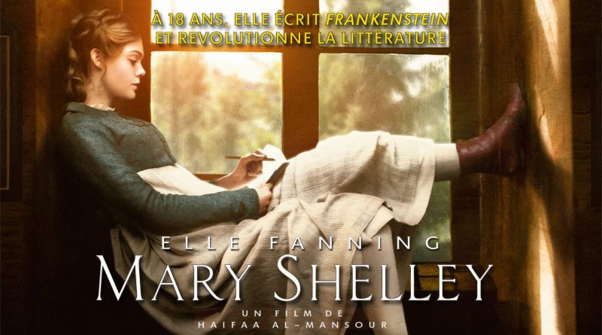In 1814, Mary Wollstonecraft Godwin began a passionate and scandalous relationship with the poet Percy Shelley and ran away with him. She was 16 years old. Condemned by the moralists, their tumultuous love thrived on their progressive ideas.
In 1816, the couple was invited to spend the summer in Geneva, on the shores of Lake Geneva, at the home of Lord Byron. One stormy night, prompted by a bet, Mary thought of the character of Frankenstein. In a society that left no room for female writers, Mary Shelley, barely 18 years old, was about to revolutionize literature and leave a mark on popular culture forever.
By engaging with the English classical repertoire, Saudi director Haifaa Al Mansour, the first woman to direct a feature film in Saudi Arabia (the remarkable Wadjda), proves to be an interesting choice, for its feminist themes and symbolism more than for its form and cultural stakes.
Mary Shelley belongs to those women writers who were crushed by the phallocracy of their time – here the first half of the 19th century – a period when female authors were scorned and forced into pseudo existence.
Through the lens of Mansour’s camera, she becomes a fighter, a precursor to feminism (the refusal of publishers to publish her, despite the brilliance of her short but dramatic novel, unless she agreed to let her poet husband claim the name of that monstrous child).
One can understand the producers’ choice and the director’s intent to find, as we suspect, material to support a comparison with Saudi Arabia, where women amount to nothing without their husbands, akin to the United Kingdom of the 19th century.


